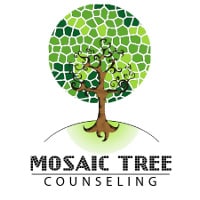Mosaic Tree Counseling
The importance of rapport building in the therapeutic alliance.
Request More InformationRapport Building
Maria believes in the importance of rapport building in the therapeutic alliance.
Linda Tickle-Degnen and Robert Rosenthal (1990), from Boston University and Harvard University, respectively, explored the subject of rapport in “The Nature of Rapport and Its Nonverbal Correlates.” These researchers found that rapport is not something with which one is intrinsically born; instead it only occurs when two people interact (Tickle-Degnen & Rosenthal, 1990). In their research, Tickle-Degnen & Rosenthal (1990) purported three components of rapport: mutual attentiveness, positivity, and coordination. Biological aspects of the interaction need to be balanced; e.g., matching each other’s energy levels, body language, tone, and talking speed (Angelo, 2015).
A study in 2012 by Vacharkulksemsuk & Fredrickson entitled Strangers in Sync: Achieving Embodied Rapport Through Shared Movements suggested that the coordination aspect of rapport is even more important than the early stages of rapport-building, and that the importance declines when rapport is more firmly established. In another article, Rapport is Not So Soft Anymore by DePaulo & Bell (2009), it was noted that some scientists were too embarrassed to be associated with rapport, as it was considered “mushy” and unprofessional. However, in the 1960’s, researchers reported that patients who underwent surgery and had a strong rapport with their doctors experienced reduced pain after operations, such as in the 1964 study Reduction of Postoperative by Encouragement and Instruction of Patients was a Study of Doctor-patient Rapport by Egbert, Battit, Welch, Bartlett, & Egbert, who were all MDs. Studies of doctor-patient rapport, teacher-student rapport, and therapist/psychologist-patient rapport were the most common studied for the effectiveness of the rapport-building relationship (Angelo, 2015).
History of Therapeutic Alliance
Freud had many therapeutic alliance issues as soon as he began to use psychological treatments for his patients (Freud, 1913). Freud expected them to submit to be hypnotized, but they resisted (Muran & Barber, 2010). After that, they even resisted free association (Freud, 1913). Later, Freud thought that the patient’s transference to him conflicted with his work of analysis, that this “resistance” meant that his patients were not participating in the work as expected (Freud, 1913). Freud struggled to engage and keep his patients in treatment and this pattern became a recurring theme in the development of theories on treatment and alliance (Freud, 1913; Muran & Barber, 2010). However, after failed attempts at establishing therapeutic alliance, Freud decided to emphasize the bond between the patient and therapist (Freud, 1913). He realized that this bond helps to keep the patient in treatment, helps to overcome any doubt, promotes cooperation, and that this enables the patient to effectively participate in treatment (Muran & Barber, 2010). Sterba (1934) introduced the word “alliance” by expanding on the notion that the patient has a rational, observing capacity that enables the analyst to go against the irrationality of the patients’ transferences and defenses. Consequently, the patient’s engagement, leading to commitment, creates a positive feeling toward the therapist, enhancing trust (Thompson et al., 2007).
Defining Therapeutic Alliance and its Relationship with Treatment
Rapport building is needed to establish a working therapeutic alliance to achieve common goals in therapy. Therapeutic alliance is further described as the relationship that a client has with his/her therapist, as well as the level of his or her of trust in the therapist (Salters, 2017; Meyers, 2014). The quality of the client and therapist alliance (see below) is a strong predictor of positive outcomes in treatment (Ardita & Rabellino, 2011). However, it is important to note that techniques and alliance are not at the same level (Muran & Barber, 2010). Researchers Bedi, Davis, & Williams (2005) reserved the term “technique” for interventions geared towards treatment. Bordin (1979) hypothesized that the effectiveness of therapy is a function of the strength of the working alliance.
Therapy Modalities
Abuse & Neglect
ADHD
Anxiety
Bipolar
Career Counseling
Communication Difficulties
Depression
Eating Disorders
Employee Assistance
Impulsive Behavior
Obsessive Compulsive Disorder (OCD)
Oppositional Defiant Disorder (ODD)
Play Therapy
Post Traumatic Stress Disorder (PTSD)
Self Esteem
Self Mutilation
Shop
Social Skills

